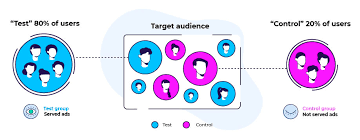In today’s highly competitive digital landscape, marketers are constantly seeking innovative ways to improve the effectiveness of their campaigns. One strategy that has gained significant attention is leveraging incrementality. This powerful approach allows marketers to measure the true impact of their marketing efforts and optimize their campaigns accordingly. By understanding the incremental contribution of their marketing activities, businesses can make data-driven decisions, allocate resources effectively, and achieve better results. In this article, we will explore the concept of leveraging incrementality and how it can be harnessed to optimize your marketing campaigns.
Leveraging Incrementality to Optimize Your Marketing Campaigns
Incrementality refers to the additional value generated by a marketing campaign compared to the organic or existing demand. Leveraging incrementality involves identifying the incremental impact of various marketing channels, tactics, or strategies and utilizing this knowledge to enhance campaign performance. By focusing on the incremental gains, marketers can allocate their budgets, resources, and efforts more efficiently, resulting in improved return on investment (ROI) and overall campaign success.
Understanding Incremental Metrics: Breaking Down the Data
To leverage incrementality effectively, marketers need to have a solid understanding of the key metrics that indicate the incremental impact of their marketing activities. Here are some essential metrics to consider:
- Incremental Conversions: Measure the additional conversions generated by the marketing campaign compared to the baseline or control group.
- Incremental Revenue: Calculate the extra revenue generated by the campaign beyond the organic or existing revenue.
- Incremental Return on Ad Spend (ROAS): Determine the return on investment specifically driven by the campaign, excluding the organic or existing results.
- Incremental Customer Acquisition Cost (CAC): Evaluate the cost of acquiring new customers through the campaign, excluding existing or organic customers.
By analyzing these metrics, marketers can gain valuable insights into the incremental impact of their campaigns and make informed decisions to optimize their marketing strategies.
Learn More: Ad Budget Calculator
Implementing Incrementality Testing: A Step-by-Step Approach
Implementing an incrementality testing framework is crucial to uncover the true impact of your marketing campaigns. Here’s a step-by-step approach to guide you:
Step 1: Define Your Test and Control Groups
To measure the incremental impact, you need to establish two distinct groups: the test group and the control group. The test group receives the marketing campaign, while the control group remains untouched, representing the organic or existing demand.
Step 2: Collect and Analyze Data
Gather data from both the test and control groups during the campaign period. Track conversions, revenue, customer acquisition, and other relevant metrics. Use advanced analytics tools and techniques to process and compare the data accurately.
Step 3: Calculate Incremental Metrics
Calculate the incremental metrics by comparing the results of the test and control groups. This analysis will help you understand the true impact of your campaign beyond the existing demand.
Step 4: Optimize Based on Insights
Utilize the insights gained from the incrementality testing to optimize your marketing campaigns. Allocate resources, adjust strategies, and focus on the tactics that have the most significant incremental impact.
Benefits of Leveraging Incrementality
Leveraging incrementality in your marketing campaigns can offer several benefits:
- Accurate Measurement: By focusing on incremental impact, you gain a more accurate understanding of the effectiveness of your marketing efforts.
- Data-Driven Decision-Making: Incrementality testing provides concrete data to drive decision-making, enabling you to make informed choices based on actual campaign performance.
- Optimized Resource Allocation: Understanding which channels, tactics, or strategies contribute the most incrementality allows you to allocate your resources effectively, maximizing your ROI.
- Improved Campaign Performance: By optimizing your campaigns based on incrementality insights, you can enhance your overall campaign performance, achieving better results and meeting your objectives.
Conclusion
Leveraging incrementality is a powerful strategy that can help marketers optimize their marketing campaigns and achieve better results. By understanding the incremental impact of their efforts, businesses can make data-driven decisions, allocate resources effectively, and enhance their overall campaign performance. Implementing incrementality testing and analyzing key metrics allow marketers to unlock the true potential of their campaigns. Embrace the power of incrementality and take your marketing campaigns to new heights.



